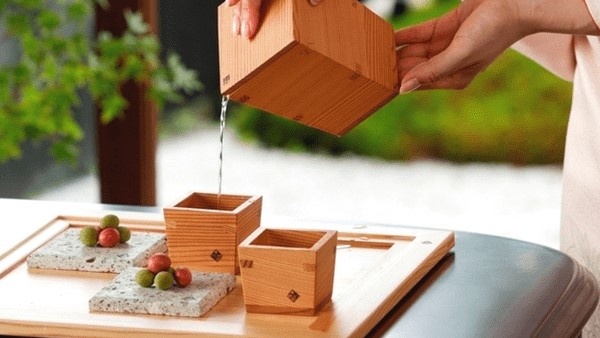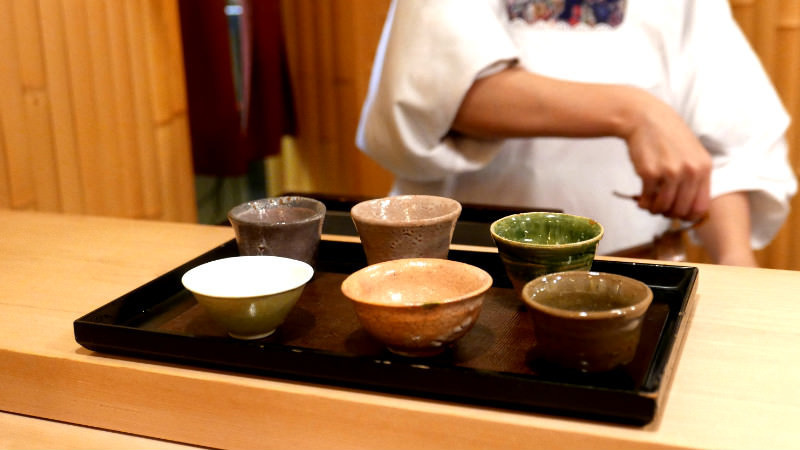How to drink sake?
Although the most popular beverage in Japan is beer, and their whiskey is of world-class quality, the country's national drink is and will forever be sake.
This exciting rice-based alcoholic drink has been called rice wine and rice beer, but it is neither; it's in a category of its own.
Understanding the intricacies behind the distinct sake styles, quality tiers and flavour profiles requires thorough (but tasty) study. Still, we can learn a bit about this extraordinary drink every day, starting with how to drink sake.
Sake is a complicated drink, producing it is labour intensive and time-consuming. It's an act of love! The extensive process results in many styles, each with unique flavour profiles, alcohol levels and sweetness. No two sake bottles are alike.
Before you learn how to drink and serve sake, you might want to know more about sake making. Please read our What is Sake Guide, and you might also enjoy our feature about the History of Sake.
With a notion of why every sake is distinct from others, let's talk about how you should serve and appreciate this ancient drink.
How To Serve and Drink Sake
Some sake comes in wine bottles, while others come in bottles resembling beer or liqueur. Despite the packaging, proper sake service starts by pouring the sake into a tokkuri.
Tokkuri
A tokkuri is a flask, typically very stylish and nicely decorated, and it's ideal to pour sake to your guests.
The tokkuri serves another purpose, when warm sake is to be served, the tokkuri is heated in warm water, allowing for gentle heating that doesn't damage the precious beverage.

Masu
Back in the day, vendors sold rice by volume using a wooden box as a standard measure. That box is the masu and holds around 180ml.
Using the masu as a drinking vessel became customary, with the added benefit of infusing the spirit with wood notes. Of course, the finest types of sake would be ruined by the wood flavours, so today the masu is ornamental and not widely used.

Ochoco
Small ceramic cups soon became the norm for drinking sake, they're odourless and can be quite beautiful — authentic collector's pieces.

Wine Glasses
Today, the finest sake bottles can have hefty price tags, and experts serve these extraordinary beverages in the most exclusive restaurants around the world.
It comes as no surprise that wine glasses, particularly those used for white wine, have become the norm in certain circles. Swirling a glass of sake releases its subtle aroma, bringing immense pleasure to the taster.

Should Sake Be Enjoyed Warm or Cold?
Sake producers create a wide variety of styles, some are crystal clear, and others are milky, some are bone dry and others sweet.
Traditionally, sake was always served heated in Japan but in the past 30-40 years or so, things have begun to change slightly, with more and more sake being served at room temperature or chilled.
This is not only due to changing fashions but also to fundamental improvements in production processes. Many sakes, and in particular the ginjoshu varieties that didn’t really exist 40 years ago, now have much more delicate and refined flavours and aromas, which can sometimes be lost if the drink is heated. Most sakes used to be much rougher, fuller, sweeter and woodier, and as such were well suited to warming.
Whilst the only way to find your preferred serving temperature for a particular sake is to experiment, sake experts have placed different categories of sake into three basic ways of serving the drink to help guide you. These are kan or heated sake, hiya which refers to chilled sake and thirdly sake which is served at room temperature.
Kan - heated sake
Much of today’s sake is still served warm or hot, partly because heating can mask unpleasant aspects of the flavour of the drink and make it more palatable; something which is often necessary in the case of the cheapest futsushu (regular sake). Premium sake on the other hand, with its more delicate character and subtle aroma, is not generally recommended for heating to high temperatures.
However, Junmaishu (pure rice sake) can be warmed to about 45 degrees Celsius, while junmai ginjo may be enjoyed at a warm level of about 40 degrees Celsius. The only other type of premium sake conducive to heating is taruzake, which is sake that has been stored or aged in a cedar cask.
Hiya – Chilled Sake
Most premium sake is best served chilled, with the optimum level for ginjoshu, daiginjoshu, junmai daiginjoshu and unpasteurized namazake considered to be suzuhie or ‘cool’, at around 15 degrees Celsius. This is the temperature at which the subtle flavours and fine fragrances of these refined sakes can be best enjoyed. They may be chilled further, however excessive chilling may dull the senses of taste and smell, and the subtleties of flavour and fragrance will be lost. Namazake, because it’s unpasteurized, must be stored at below room temperature, and should never be warmed or heated. It can generally be served colder than other types of sake.
Room Temperature
This third option for serving sake is in fact one of the most versatile. It’s recommended for all but the highest quality ginjoshu and daiginjoshu, but even these may be served at room temperature without there being a detrimental effect on flavour, aroma and overall enjoyment of the drink.
For almost all of our sake we have indicated the ideal temperature in the product specification. However, as you have seen, sometimes it comes down to person taste. Enjoy!

